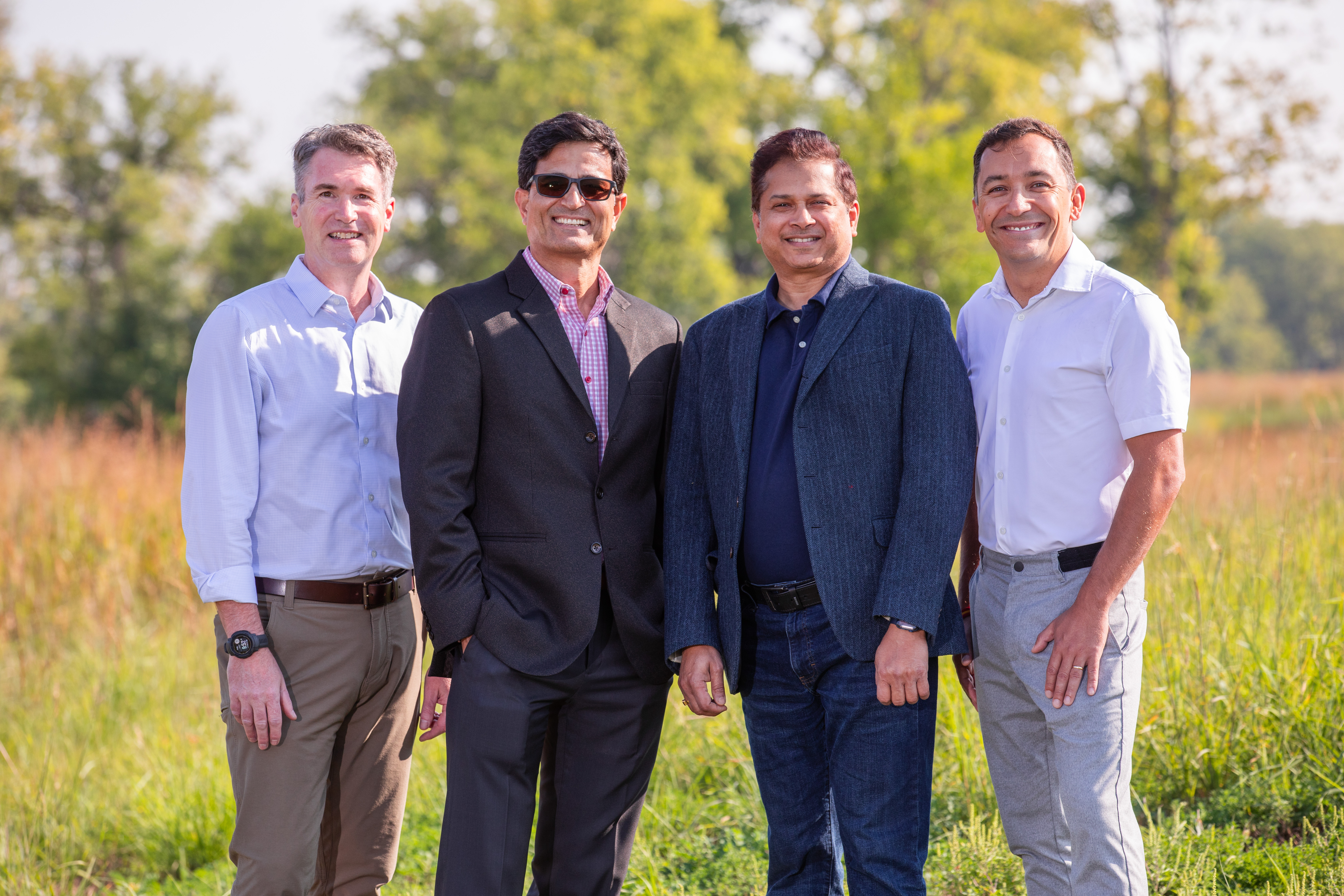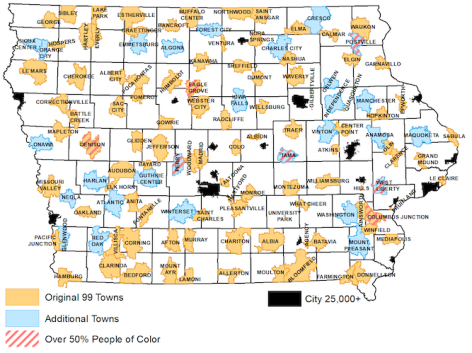
The project leaders for the Iowa Small Town Poll are, from left, David Peters, professor of rural sociology; Ramesh Balayar, assistant teaching professor of sociology; Das Biswa, associate professor of community and regional planning; and Himar Hernandez, assistant program director of community and economic development, ISU Extension and Outreach. Photo by Christopher Gannon/Iowa State University. Larger image.
AMES, Iowa – The latest version of a once-a-decade Iowa State University poll will survey rural Iowans about quality-of-life issues and how small town residents can come together as one community to build prosperity.
David Peters, sociology professor and rural sociologist for ISU Extension and Outreach, coordinates the poll. He said the results will help the Iowa Small Town Poll project team develop best practices for communities that are seeing new residents arrive from more diverse backgrounds.
“The Iowa Small Town Poll provides foundational data to help rural communities make decisions about needs,” Peters said. “Not everyone is involved in community groups and speaks up to share their opinions. Asking these questions in a systematic way helps people think about specific community issues.”
From survey to solutions
Supporting Iowa’s small towns is the main goal of the decennial poll, which is funded by a four-year, $650,000 grant from the U.S. Department of Agriculture. The survey results give communities statistically valid data gauging residents’ opinions, which can be more nuanced than conventional wisdom. For example, Peters said affordable housing is often considered a pressing issue in rural communities. But the Iowa Small Town Poll consistently finds that residents see a lack of quality housing as a bigger problem.
“There are plenty of homes, but they are homes people don’t want to live in. It’s more about remodeling existing houses, mainly built pre-1940s, to make them appealing to modern tastes,” he said.
Previous polls have helped inform many community improvement projects in rural Iowa. Data from the survey has helped small town leaders identify a recreation center as a need in Elma, understand barriers to volunteering in Everly and market the high quality of life in Sac City.
Each version of the poll includes a core group of questions asked every decade, which provides a sense of how sentiments are changing over time. Other questions are added and dropped as researchers explore different issues.
New program planned
How small towns manage demographic change is crucial. Mirroring a national trend, rural Iowa has been losing population for generations – about 2% between 2010 and 2020, even as the state’s overall population grew about 5%. But Iowa’s rural population would have fallen by more than 6% over the decade without multicultural in-migration, which has continued to accelerate since 2020, Peters said.
“This brings a whole host of opportunities and challenges,” he said. “You can boost your workforce, and there are younger people to fill schools. New residents might start businesses, improve the housing stock and serve as volunteers. The challenges are the differences in languages and cultures.”
Using data from the poll, the project team will select 20 towns for follow-up focus groups. The deeper study of those communities will help identify strategies that promote openness to assimilating newcomers, forming the basis of a new program ISU Extension and Outreach will offer.
Himar Hernandez, assistant program director of community and economic development for ISU Extension and Outreach, will lead an extension team to create the new curriculum, which he sees as building on existing community-focused extension programs. The 2014 version of the Iowa Small Town Poll, for instance, was the impetus for Leading Communities, a six-month program to help community leaders build skills and local connections.
“One thing that gives us a big advantage is people know we’re unbiased. We have research for them, and they’re free to decide what to do with it. They’re in full control,” Hernandez said. “But they have to do the work to see changes. It’s not just going to happen like magic.”
The 2024 poll will expand on methods piloted in a smaller survey during the COVID-19 pandemic, with partner organizations in some communities helping with data collection and translation. The approach is an attempt to give community leaders in especially diverse towns a better chance to hear from underrepresented residents, Peters said.
“The best decisions come when you involve your workforce, customers and parents of school children,” he said.
Adding key hubs
The 2024 version of the poll also adds 26 towns to the original one-per-county roster of 99. The new communities are regional hubs, with populations between 3,000 and 8,000 people.
Regional hubs are worth close attention because of their importance in rural areas, Peters said. They are large enough to support services such as health care facilities and grocery stores, essential to both their own residents and those in nearby communities.
“If a town of 500 people loses its grocery store, it’s a local problem. But if a town of 4,000 loses its only grocery store, people in many nearby towns can’t easily buy food,” he said. “When regional hubs begin to lose people, that can be a crisis.”
COVID-19 response
The impact of COVID-19 will be another new line of inquiry in the 2024 poll. The survey will ask respondents how the pandemic affected them and what responses they feel worked well.
Knowing what rural Iowans think about the response to COVID-19 while the memory of the experience remains somewhat fresh will help policymakers and communities better prepare for the next pandemic, Peters said.
